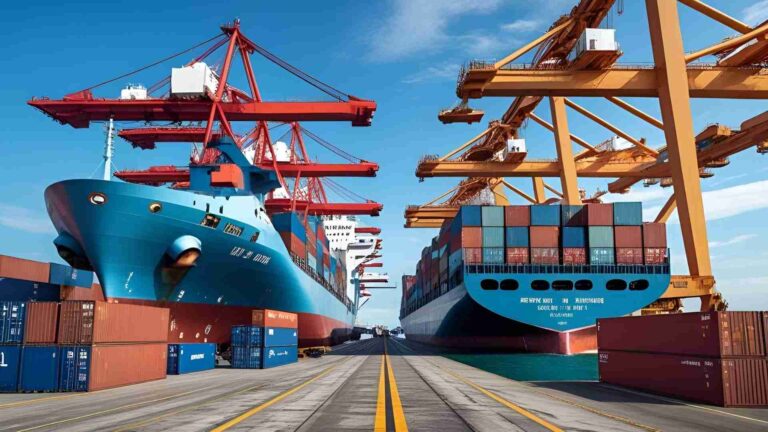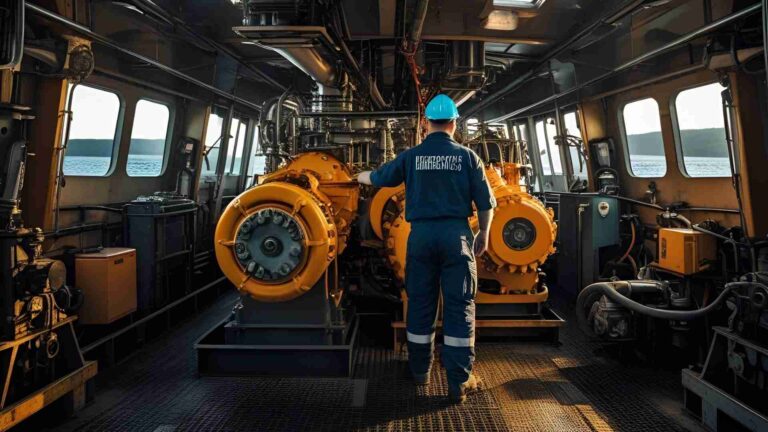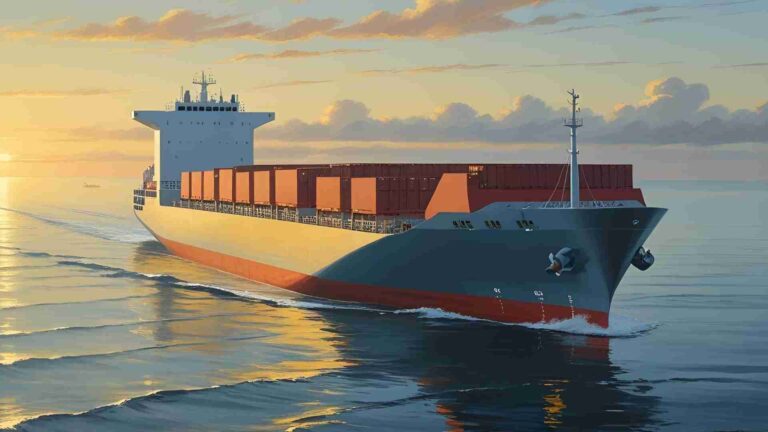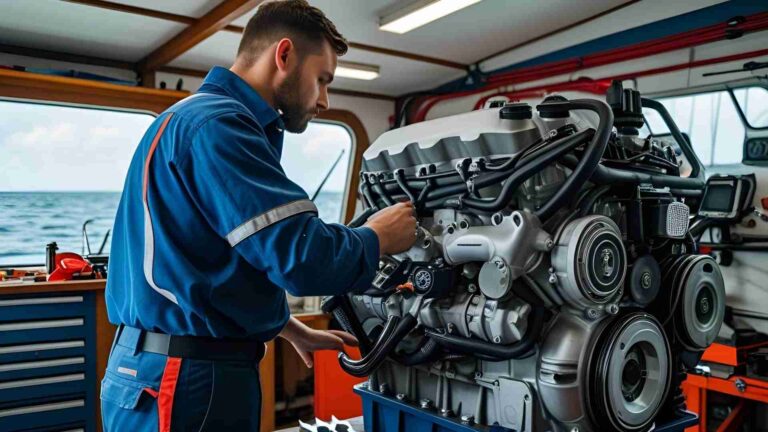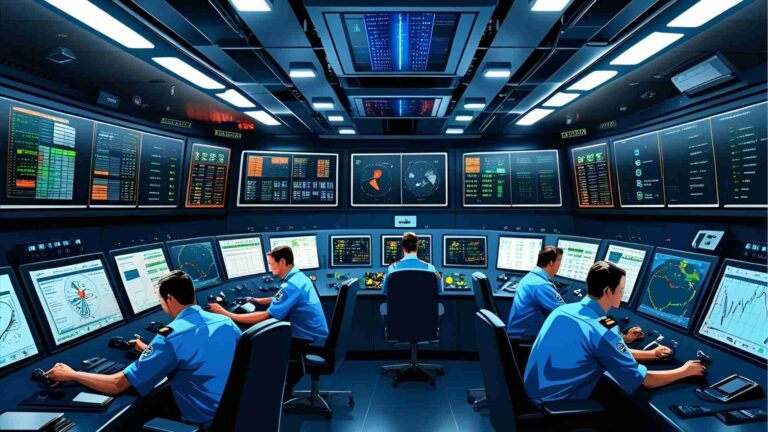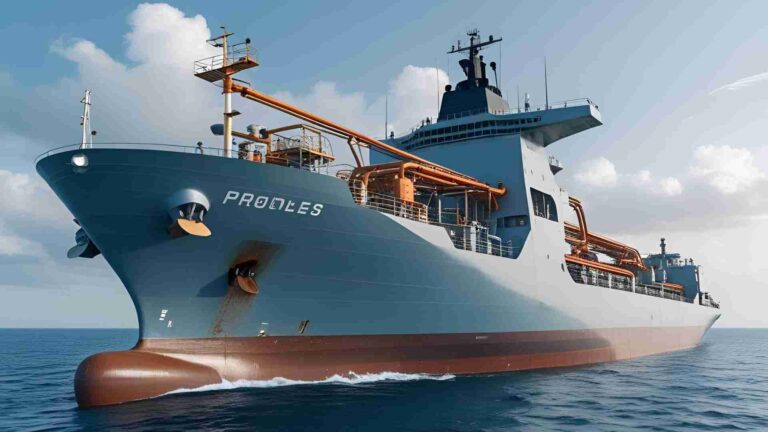Oily Water Separator: Construction and Working
Learn about oily water separators (OWS) in ships, their construction, working principles, types, and importance in preventing marine pollution.
Oily water separators (OWS) are critical systems on ships, designed to remove oil and contaminants from bilge water before discharge into the sea. These systems ensure compliance with stringent environmental regulations, such as MARPOL Annex I, while protecting marine ecosystems from oil pollution. This article explores the construction, working principles, types, regulations, maintenance, and factors affecting OWS performance, providing a comprehensive guide for seafarers, ship managers, and maritime professionals.
What is an Oily Water Separator?
An oily water separator is a specialized piece of equipment installed on ships to treat bilge water—a mixture of water, oil, grease, detergents, and other contaminants that collect in the lowest part of a ship’s hull, known as the bilge. The primary function of an OWS is to separate oil from water, ensuring that the discharged water contains less than 15 parts per million (ppm) of oil, as mandated by international maritime regulations. The separated oil is stored onboard for proper disposal, preventing environmental pollution.
OWS systems are integral to ship operations, not only for regulatory compliance but also for enhancing safety by reducing fire hazards caused by oil accumulation in bilges. They are used in various maritime vessels, including cargo ships, oil tankers, and passenger ships, making them a cornerstone of environmentally responsible shipping.
Importance of Oily Water Separators
The significance of OWS systems extends beyond mere compliance. Here are the key reasons why they are indispensable:
- Environmental Protection: OWS systems prevent oil and harmful contaminants from being discharged into the sea, safeguarding marine life and ecosystems.
- Regulatory Compliance: Compliance with MARPOL Annex I ensures that ships avoid hefty fines, detentions, and reputational damage during port state control (PSC) inspections.
- Safety: By removing flammable oils from bilge water, OWS systems reduce the risk of fire hazards onboard.
- Operational Efficiency: Properly functioning OWS systems minimize downtime and maintenance costs, ensuring smooth ship operations.
MARPOL Regulations Governing Oily Water Separators
The International Convention for the Prevention of Pollution from Ships (MARPOL), specifically Annex I, regulates the discharge of oily water from ships. Key provisions include:
- Discharge Limits: For ships of 400 gross tonnage (GT) and above, oily water discharge is permitted only under the following conditions:
- The ship is en route.
- The oily mixture is processed through an approved OWS.
- The oil content in the effluent is below 15 ppm without dilution.
- The oily mixture does not originate from cargo pump-room bilges on oil tankers.
- The oily mixture is not mixed with oil cargo residues.
- Prohibited Areas: In special areas, such as the Antarctic, any discharge of oil or oily mixtures is strictly prohibited.
- Equipment Standards: As per MEPC 107(49), OWS systems must include a certified oil content monitor (OCM) that records alarm conditions and is tamper-proof. The OCM must activate an alarm when freshwater is used for cleaning or zeroing purposes.
- Operational Requirements: The OWS must be operated by trained officers under the direct supervision of the Chief Engineer, who is responsible for its maintenance and ensuring it is locked when not in use to prevent unauthorized operation.
Failure to comply with these regulations can result in severe penalties, including fines, vessel detention, and legal action against the ship’s crew or owners.
Construction of Oily Water Separators
An OWS system comprises three main segments: the separator unit, the filter unit, and the oil content monitor and control unit. Each segment plays a critical role in ensuring effective oil-water separation.
1. Separator Unit
The separator unit is the primary chamber where the initial separation of oil and water occurs, leveraging the principle of gravity separation due to the density difference between oil (less dense) and water (more dense).
- Components:
- Catch Plates: Located in the coarse separating compartment, these plates trap oil droplets, allowing them to coalesce and rise to the oil collection chamber.
- Oil Collection Chamber: Stores separated oil for later disposal in a designated sludge tank.
- Fine Settling Compartment: Non-flowing oil-water mixtures settle here after passing through the catch plates, further aiding separation.
- Heater: Incorporated in some designs to reduce oil viscosity, enhancing separation efficiency, especially in colder climates or for high-viscosity oils.
- Control Valve: A pneumatic or electronic valve releases separated oil into the sludge tank.
The output from the separator unit typically contains around 100 ppm of oil, requiring further treatment to meet the 15 ppm discharge standard.
2. Filter Unit
The filter unit processes the output from the separator unit to achieve finer purification. It consists of three stages:
- Filter Stage: Removes solid particles and impurities from the bilge water, preventing clogging in subsequent stages.
- Coalescer Stage: Contains coalescing filters that induce smaller oil droplets to merge into larger ones, breaking surface tension and facilitating separation. These larger oil droplets rise to the collecting chamber.
- Collecting Chamber: Stores the coalesced oil for periodic removal.
The output from the filter unit must have an oil content below 15 ppm to comply with MARPOL regulations. A freshwater inlet is often provided for cleaning and flushing the filters before and after operation.
3. Oil Content Monitor and Control Unit
This unit ensures that the discharged water meets regulatory standards by continuously monitoring and controlling the oil content.
- Oil Content Monitor (OCM): Measures the oil content in the treated water. If the oil content exceeds 15 ppm, the OCM triggers an alarm and sends data to the control unit.
- Control Unit: Manages the operation of solenoid valves based on OCM readings. It includes:
- Two solenoid valves in the oil collection chambers of the separator and filter units.
- A 3-way solenoid valve at the discharge side, directing water either overboard (if below 15 ppm) or to the sludge tank (if above 15 ppm).
- Freshwater Flushing: A small freshwater connection allows periodic cleaning of the OCM, with alarms triggered and recorded to ensure transparency.
Diagram of Oily Water Separator Components
Below is a simplified representation of an OWS system using syntax:
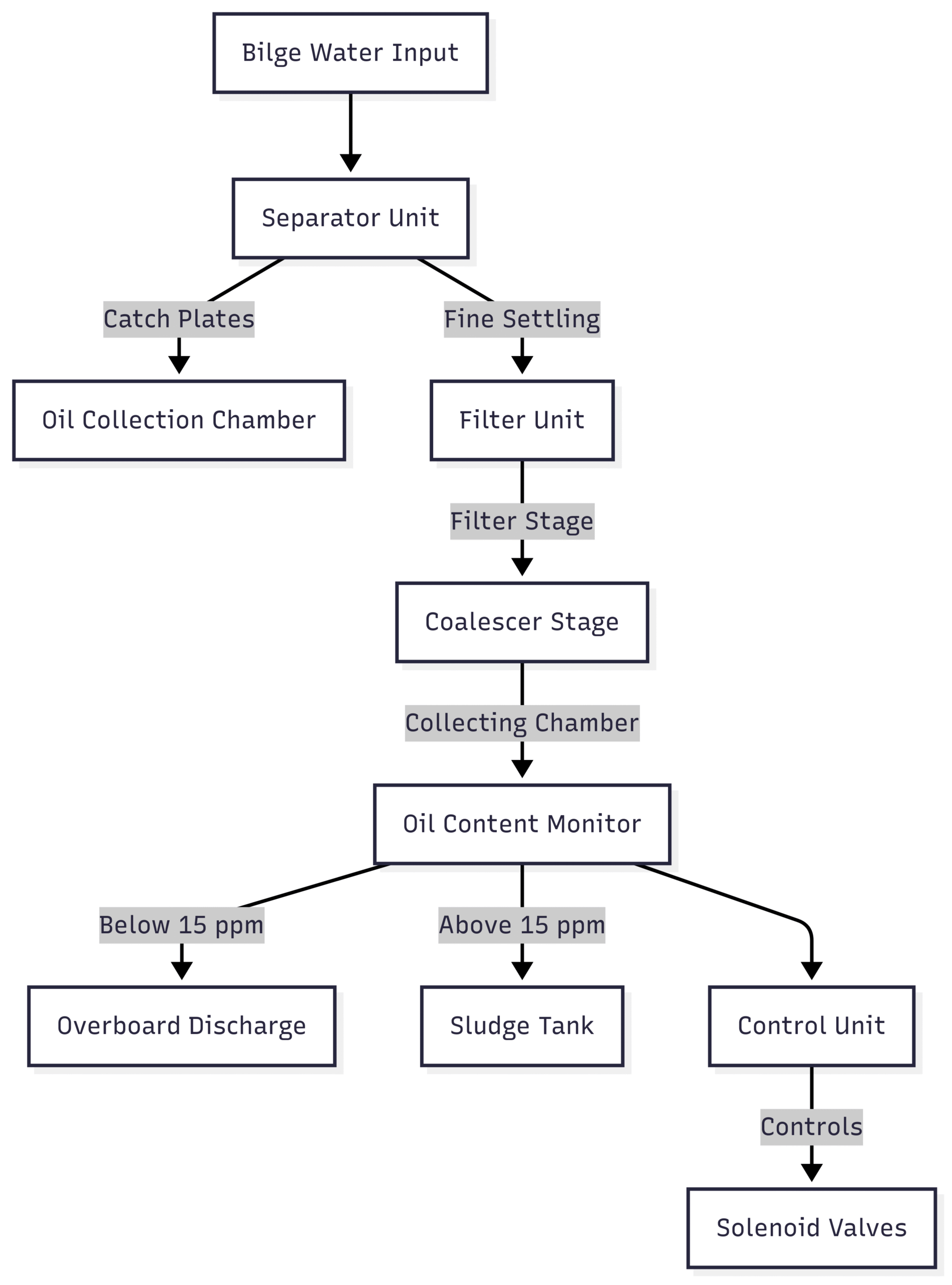
Working Principle of Oily Water Separators
The operation of an OWS relies on the physical properties of oil and water, primarily their density difference and immiscibility. The process can be broken down into the following steps:
- Gravity Separation:
- Bilge water is pumped into the separator unit, where it flows through catch plates.
- Oil, being less dense, rises to the top and collects in the oil collection chamber, while water settles in the fine settling compartment.
- A heater may be used to lower oil viscosity, improving separation efficiency.
- Filtration and Coalescence:
- The partially treated water from the separator unit enters the filter unit.
- Solid impurities are removed in the filter stage, followed by coalescence in the coalescer stage, where small oil droplets merge into larger ones for easier removal.
- The treated water is directed to the oil content monitor.
- Monitoring and Discharge:
- The OCM measures the oil content in the treated water.
- If the oil content is below 15 ppm, the water is discharged overboard via the 3-way valve.
- If the oil content exceeds 15 ppm, the water is recirculated to the sludge tank for further treatment.
Types of Oily Water Separators
There are two primary types of OWS systems: gravity-based and centrifugal separators. Each has distinct advantages and applications.
1. Gravity-Based Oily Water Separators
Gravity-based OWS systems rely on the natural density difference between oil and water. They are the most common type due to their simplicity and cost-effectiveness.
- Working Principle:
- Bilge water is pumped into the top of the separator and flows downward.
- Catch plates trap small oil droplets, which coalesce into larger droplets and rise to the oil collection chamber.
- The treated water exits the bottom, typically containing around 100 ppm of oil, requiring further filtration to meet the 15 ppm standard.
- Components: Include filter elements, conical plates, resistive heaters, and absorption media, depending on the manufacturer’s design.
- Advantages:
- Simple design, easy to maintain.
- Cost-effective for smaller vessels.
- Limitations:
- Less effective for emulsified oils or high-viscosity oils.
- Slower separation process compared to centrifugal systems.
2. Centrifugal Oily Water Separators
Centrifugal OWS systems use high-speed rotation to enhance separation efficiency, making them suitable for handling emulsified oils and complex mixtures.
- Working Principle:
- Bilge water is fed into a rotating bowl, where centrifugal force separates the heavier water phase (pushed to the periphery) from the lighter oil phase (collected near the center).
- The treated water is discharged, while the oil is stored for disposal.
- Advantages:
- More compact and efficient than gravity separators.
- Effective for emulsified oils and high-throughput applications.
- Limitations:
- Higher initial cost and maintenance complexity.
- Less common due to higher operational costs.
Comparison Table: Gravity vs. Centrifugal OWS
| Feature | Gravity OWS | Centrifugal OWS |
|---|---|---|
| Separation Method | Gravity-based | Centrifugal force |
| Efficiency | Moderate, less effective for emulsions | High, handles emulsions well |
| Size | Larger, bulkier | Compact |
| Cost | Lower initial cost | Higher initial cost |
| Maintenance | Simple, fewer moving parts | Complex, requires skilled maintenance |
| Applications | Smaller vessels, simpler bilge water | Larger vessels, complex mixtures |
Factors Affecting OWS Performance
Several factors influence the efficiency of oil-water separation:
- Density Difference:
- Oil is less dense than water, facilitating separation. Seawater, with higher density than freshwater, enhances separation rates.
- Viscosity:
- Lower viscosity fluids (e.g., freshwater) allow oil droplets to rise faster than higher viscosity fluids (e.g., seawater).
- Temperature:
- Higher temperatures reduce oil viscosity, improving separation. Heaters are often used in colder climates.
- Oil Droplet Size:
- Larger oil droplets separate more easily. Coalescing filters increase droplet size by merging smaller droplets.
- Pump Type and Rating:
- Centrifugal pumps can break oil droplets into smaller sizes, reducing separation efficiency. Positive displacement pumps (e.g., screw or gear pumps) are preferred.
- Presence of Emulsions:
- Chemically stabilized emulsions, often caused by detergent-based cleaning agents, are difficult to separate using gravity alone.
- Ship Motion:
- Excessive rolling or pitching can disrupt the separation process, causing oil globules to mix back with water.
Maintenance of Oily Water Separators
Regular maintenance is crucial to ensure OWS systems operate within regulatory limits. Neglecting maintenance can lead to clogging, reduced efficiency, and non-compliance.
Maintenance Procedures
- Daily Checks:
- Inspect for leaks, unusual noises, or alarms.
- Verify OCM functionality and calibration.
- Monthly Cleaning:
- Stop the bilge pump and shut off the overboard valve.
- Drain oil and water from the separator and filter units.
- Clean catch plates and coalescer filters using a low-pressure hose.
- Remove and dispose of solids in accordance with regulations.
- Check the condition of filters and replace if necessary.
- Annual Overhaul:
- Disassemble the separator unit and inspect all components.
- Clean or replace coalescer filters and catch plates.
- Test the OCM and control unit for accuracy.
- Fill the system with clean water to check for leaks before resuming operation.
Maintenance Challenges
- Below-Ground Units: Harder to access and clean, requiring strict adherence to maintenance schedules.
- Emulsions and Solids: Excessive solids or emulsified oils can clog filters, necessitating frequent cleaning.
- Crew Training: Inadequate training can lead to improper operation or maintenance, increasing the risk of malfunctions.
Common Causes of OWS Malfunctions
OWS systems can fail due to various reasons, leading to non-compliance or environmental violations:
- High Throughput:
- Processing bilge water at rates exceeding the OWS capacity reduces separation efficiency.
- Emulsified Oils:
- Detergent-based cleaning agents create stable emulsions that gravity separators struggle to handle.
- Improper Pump Selection:
- Centrifugal pumps create turbulence, breaking oil droplets into smaller sizes that are harder to separate.
- Ship Motion:
- Excessive rolling or pitching disrupts the gravity separation process.
- Neglected Maintenance:
- Clogged filters or catch plates reduce efficiency, leading to oil content above 15 ppm.
- Faulty OCM:
- A malfunctioning oil content monitor may fail to detect high oil levels, allowing non-compliant discharge.
Specifications and Pricing of Oily Water Separators
OWS systems vary in specifications based on ship size, bilge water volume, and operational requirements. Below is a sample specification table for a typical marine OWS:
| Specification | Details |
|---|---|
| Capacity | 0.5–10 m³/h (depending on model) |
| Oil Content Output | <15 ppm |
| Power Supply | 220V/440V, 50/60 Hz |
| Material | Stainless steel, corrosion-resistant |
| Weight | 200–1000 kg (model-dependent) |
| Dimensions | Varies (e.g., 1.5m x 1m x 1.2m) |
| Operating Temperature | 5–60°C |
| Certifications | IMO MEPC 107(49), MARPOL-compliant |
Pricing
The cost of OWS systems depends on capacity, type, and manufacturer. Approximate price ranges are:
- Gravity OWS: $10,000–$50,000
- Centrifugal OWS: $20,000–$100,000
- Additional Costs: Installation ($5,000–$15,000), spare parts ($1,000–$5,000), and annual maintenance ($2,000–$10,000).
Prices vary based on ship size, regional suppliers, and additional features like automated controls or advanced coalescing filters. For accurate pricing, contact manufacturers like Alfa Laval, Wärtsilä, or RWO.
Best Practices for OWS Operation
To maximize OWS performance and ensure compliance:
- Use Positive Displacement Pumps: Minimize oil droplet disintegration by avoiding centrifugal pumps.
- Avoid Surfactant-Based Cleaners: Prevent emulsification by using non-detergent cleaning agents.
- Regular Training: Ensure all crew members, especially the Chief Engineer, are trained in OWS operation and maintenance.
- Maintain Records: Log all OWS operations, maintenance, and OCM alarms for regulatory audits.
- Carry Spare Parts: Stock critical components like filters and OCM sensors to avoid downtime.
- Test Before Discharge: Use recirculation facilities to verify OWS performance before discharging water overboard.
Conclusion
Oily water separators are vital for maintaining environmental compliance and protecting marine ecosystems from oil pollution. By leveraging gravity or centrifugal force, these systems effectively separate oil from bilge water, ensuring discharges meet the stringent 15 ppm standard set by MARPOL Annex I. Proper construction, regular maintenance, and adherence to operational best practices are essential for optimal performance. For ship operators, investing in a reliable OWS system, training crew, and maintaining compliance not only mitigates environmental risks but also enhances operational efficiency and safety. Whether choosing a gravity-based or centrifugal OWS, understanding their working principles and maintenance needs is crucial for every maritime professional.
Share Oily Water Separator: Construction and Working with your friends and leave a comment below with your thoughts.
Read Procedure for Entering an Enclosed Space on a Ship until we meet in the next article.

